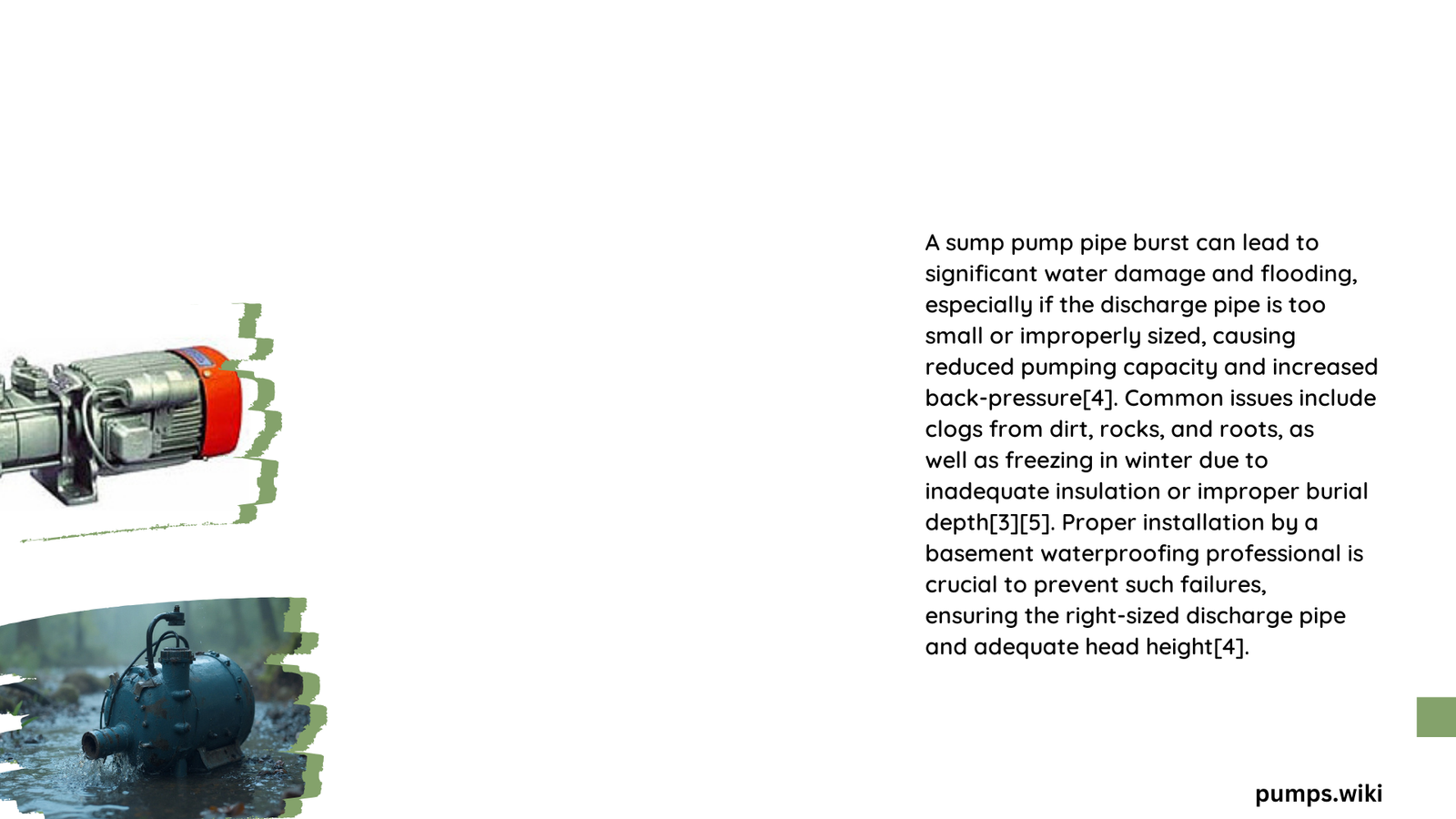A sump pump pipe burst can cause catastrophic water damage to your home’s foundation and basement, potentially leading to thousands of dollars in repairs. Understanding the intricate dynamics of pipe failures, their root causes, and immediate mitigation strategies is crucial for homeowners seeking to protect their property from unexpected water-related disasters.
What Causes Sump Pump Pipe Bursts?
Why Do Temperature Changes Impact Pipe Integrity?
Temperature fluctuations represent a significant threat to sump pump pipes. When water inside pipes freezes, it expands by approximately 9%, creating immense internal pressure that can exceed the pipe’s structural capacity.
Key Temperature-Related Risk Factors:
– Ambient temperature below 32°F (0°C)
– Inadequate pipe insulation
– Exposure to external cold environments
– Lack of consistent heating in basement areas
How Do Material Weaknesses Contribute to Pipe Failures?
Pipe material degradation occurs through multiple mechanisms:
| Material Factor | Risk Level | Potential Consequences |
|---|---|---|
| Corrosion | High | Structural weakening |
| Age | Medium | Reduced elasticity |
| Chemical Exposure | Low-Medium | Material breakdown |
What Installation Errors Lead to Pipe Bursts?
Common installation mistakes include:
– Improper pipe alignment
– Inadequate soldering techniques
– Mismatched pipe connections
– Insufficient support structures
Identifying Sump Pump Pipe Burst Symptoms

What Warning Signs Should Homeowners Recognize?
- Unusual Sounds
- Gurgling noises
- Hissing from plumbing system
-
Unexpected water movement sounds
-
Visual Indicators
- Water pooling near sump pump
- Visible pipe damage
- Unexplained moisture in basement
How Can Homeowners Detect Early Warning Signals?
Proactive detection involves:
– Regular visual inspections
– Monitoring water pressure variations
– Checking for unexplained humidity increases
– Using moisture detection sensors
Effective Repair Strategies for Sump Pump Pipe Bursts
What Immediate Steps Should Be Taken?
Emergency Response Protocol:
1. Shut off main water supply
2. Disconnect electrical connections
3. Remove standing water
4. Document damage for insurance
5. Contact professional plumbing service
What Tools Are Required for Repair?
Essential repair toolkit:
– Pipe cutter
– Adjustable wrench
– Replacement pipe sections
– Soldering equipment
– Pipe sealant
– Protective gear
Prevention Techniques for Future Protection
How Can Homeowners Minimize Pipe Burst Risks?
Preventative Maintenance Checklist:
– Insulate exposed pipes
– Maintain consistent indoor temperatures
– Conduct bi-annual professional inspections
– Install pipe heating cables
– Use corrosion-resistant materials
What Materials Offer Best Long-Term Protection?
Recommended pipe materials:
– PEX (Cross-linked Polyethylene)
– CPVC (Chlorinated Polyvinyl Chloride)
– Copper with protective coating
Cost Considerations and Professional Intervention
What Are Typical Repair Expenses?
Repair costs typically range:
– Minor repairs: $100 – $500
– Moderate damage: $500 – $1,500
– Extensive damage: $1,500 – $5,000
When Should Professionals Be Consulted?
Seek professional help when:
– Damage exceeds personal repair capabilities
– Complex pipe network involvement
– Structural integrity compromised
– Insurance documentation required
Technical Recommendations
What Advanced Prevention Technologies Exist?
- Smart water leak detection systems
- Automated shut-off valves
- Pressure regulation mechanisms
- Thermal monitoring devices
Reference:
– Drain Express Pipe Burst Guide
– Guardian Plumbing Resources
– Schuelke Plumbing Maintenance Tips
